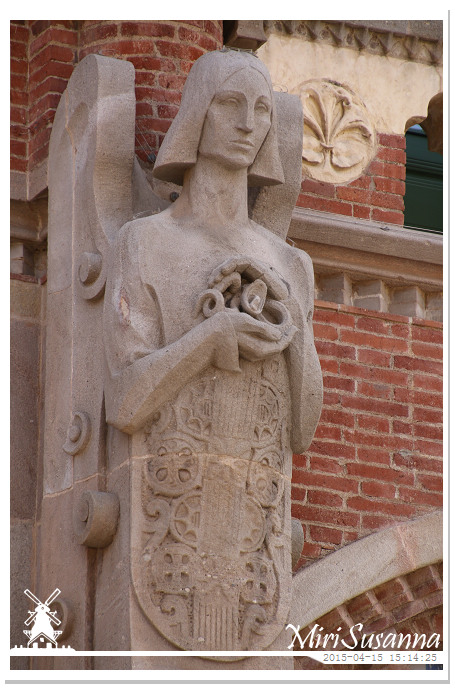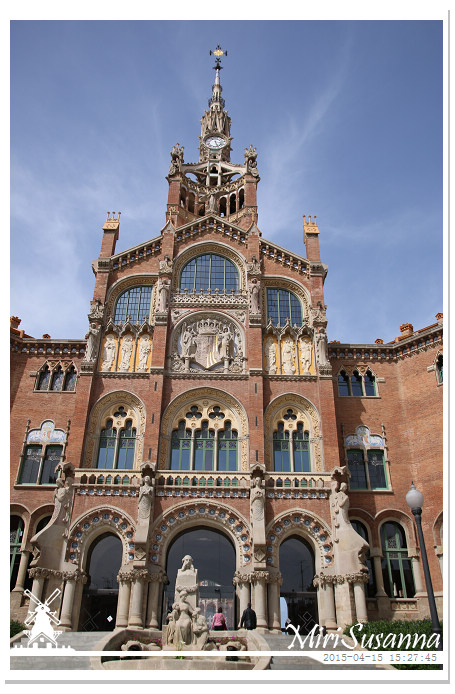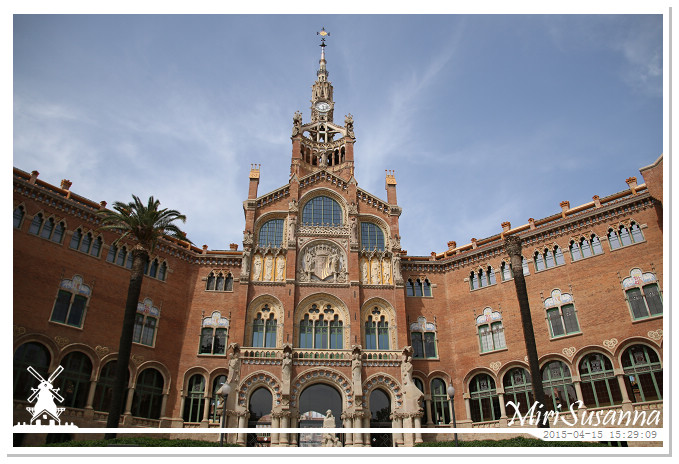
興建於1901年至1930年間,由加泰隆尼亞現代主義建築師路易·多梅內克·蒙塔內爾(Lluís Domènech i Montaner)設計的聖十字聖保羅醫院是我們在巴塞羅納參觀的第一個旅遊景點。聖保羅醫院是巴塞羅納聖十字醫院之一,這在二十世紀建立的新院區,以出資的銀行家Pau Gil命名。這是世界文化遺產之一,直至2009年6月才結束它醫院的角色。經過四年的整修,如今是博物館及文化中心,部分建築亦出租給國際非營利組織。
Hospital de la Santa Creu i Sant Pau (English: Hospital of the Holy Cross and Saint Paul) was the first tourist place that we have visited in Barcelona. This is a UNESCO World Heritage Site, built between 1901 and 1930, and designed by Catalan modernist architect Lluís Domènech i Montaner. It’s one of the Hospital of the Holy Cross in Barcelona and Saint Paul was added in honour of the banker, Pau Gil, who paid the new buildings in the 20th century. Until June 2009, it was a fully funcitioning hospital. After restoration for 4 years, it’s open again to public as a museum and cultural center.

接近聖保羅醫院的門口,我們就被它的風采深深吸引了。
Coming closer to the entrance, we’re attracted immediately by it’s design.


主建築的外觀。
Main building of the site.



聖十字醫院。
Hospital of the Holy Cross.





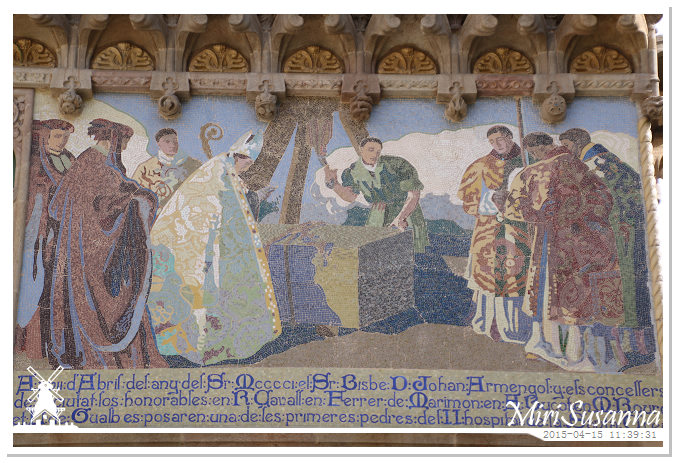









入門票。
Tickets for guided tour at 13pm.

院區模型,一看就知道是很有特色的建築群。

這醫院建在巴塞羅納舊城外,除了醫療用途,也作客棧之用。以前入夜後,城門關閉,無法及時入城的人們可以到這裡過夜休息。

參觀後才知道,這些建築的地下有通道跟主建築相連,病人就從地下道送到後方的病房和手術室。
All buildings are connected with a central underground path so that the patients could be transfered from one to another building easily.



導覽開始,我們的英語講解員是位熱情的加泰隆尼亞女生Carmie.

主建築的底層,這裡曾經是醫院的入口及急診部。
The ground floor of the main building, used to be the entrance of the hospital, and also the emergecy department.
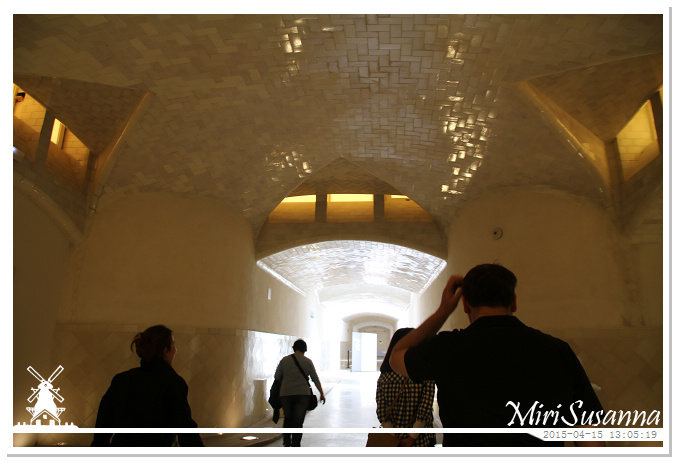
這就是地下通道,方便把病人轉移到院內的其他部門。
This’s the undergound path.

病房。
Patients’ hall.
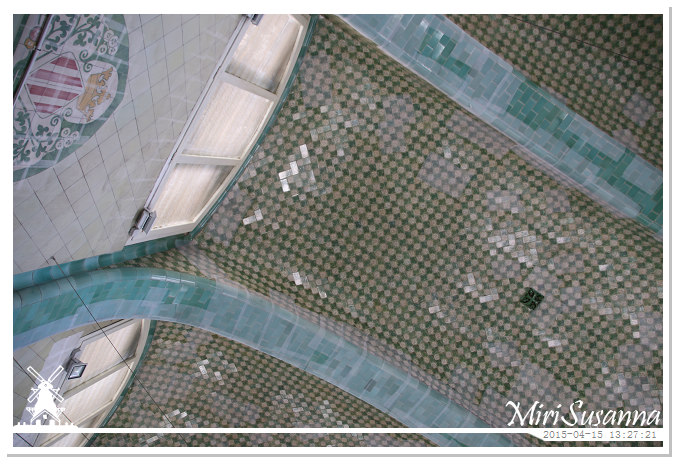
病房內都貼上彩色瓷磚,不只是因為當代流行的瓷磚建築藝術,主要目的還是容易消毒及保持衛生。為了讓病人在歡愉的環境下能早日康復,採用的顏色和圖騰都接近大自然。
The ceramic tiles have been used for all indoor surfaces in the hospital. It’s not only because mosaic was the popular architecture design, but also because it’s the easiest way to keep the hygience status at that moment.

昔日病房的照片。
Previous photo of the patients’ hall.


每棟建築都有這圓頂的部分,其實這是讓病人享受日光浴的空間。
Every building has such a part with round roof. Actually this’s a indoor space for the patients to enjoy a sunbathing.

跟著Carmie回到主建築的一樓大堂。
Back to the first floor of the main building.
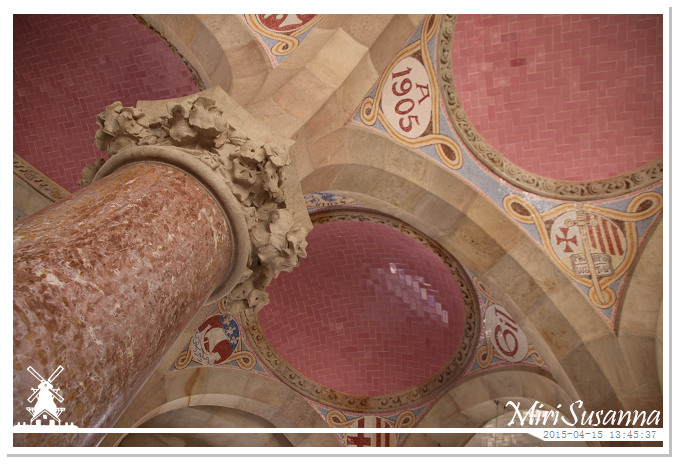
這大堂才粉紅色系,柱子用的是昂貴的粉紅大理石。
Pink colour has been used here and the main columns is made by pink marble.

聖保羅醫院的標誌。
Symbol of Hospital de Sant Pau.



往二樓的樓梯。
Stairs to the second floor.

漂亮的彩繪玻璃Flemish glass,是來自比利時的藝術。
Flemish glass, art of glass from Belgium.

主建築的一樓和二樓,主要是行政用途。
The 1st and 2nd floor of the main building were used by the administration department.

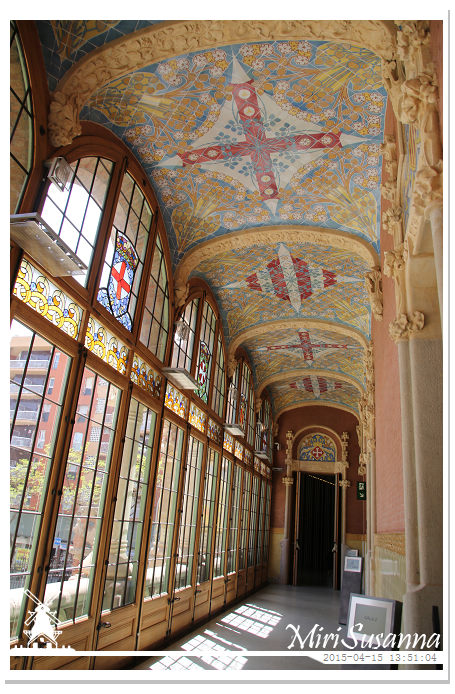
走廊。

這些門戶原先用的都是水晶玻璃,後來更新的是一般玻璃。
The original one is crystal glass, and the replaced one is normal glass.

從影子就能分辨出它們的差別,影子粗糙的是水晶玻璃,平滑的是一般玻璃。
We can separate the glasses by looking to their shadows. The smooth one is normal glass and the rough one is crystal glass.
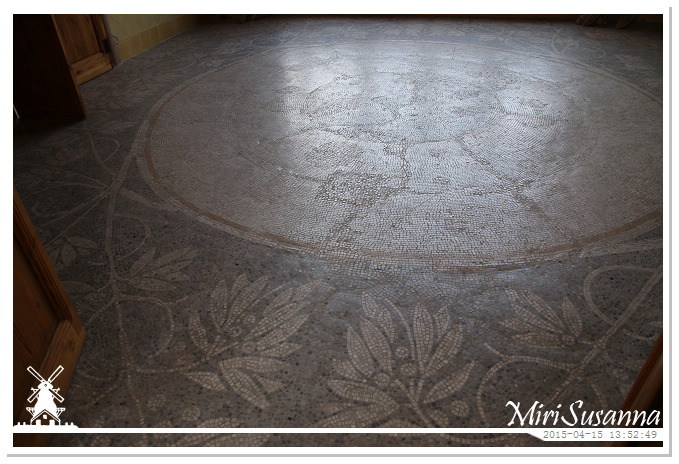
瓷磚圖騰。
Mosaic floor.




現為出租用的活動中心的大堂。
This hall become a conference or activity centrum for rent.
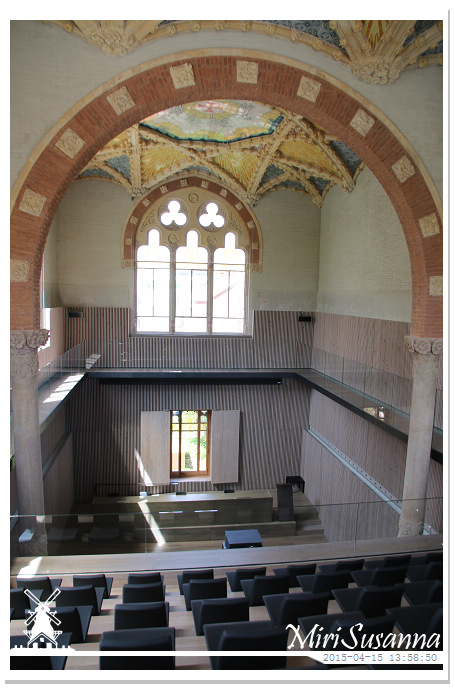














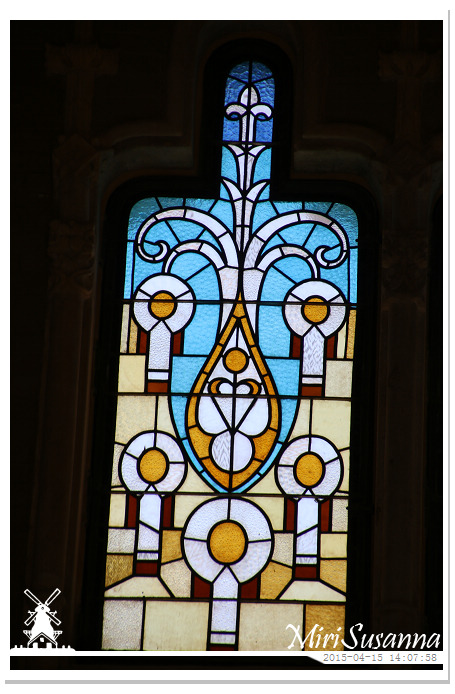

從二樓的大堂可以看到遙遙相對的聖家堂。
La Sagrada Familia in sight.



二樓的大堂富麗堂皇,是接待貴賓的大廳。
The main hall at second floor, used for important activities or ceremonies.







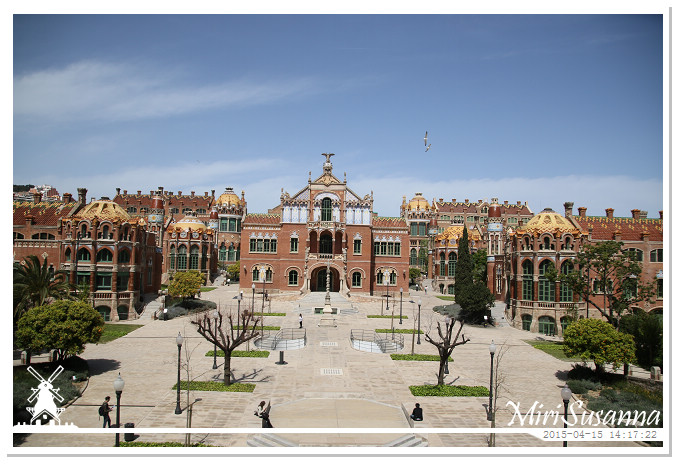
主建築後方的建築群。
View behind the main building.

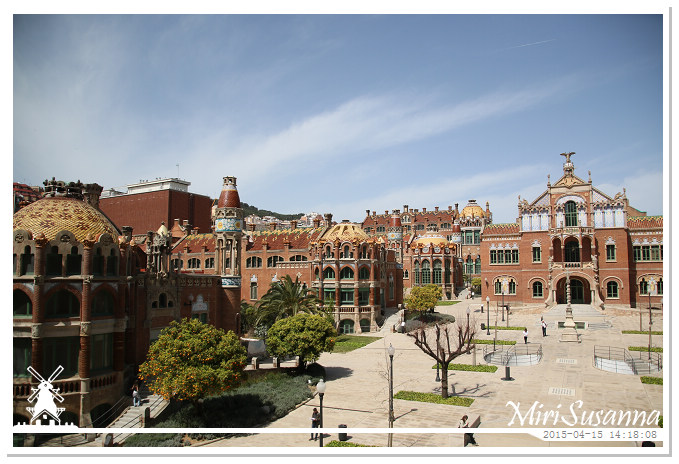




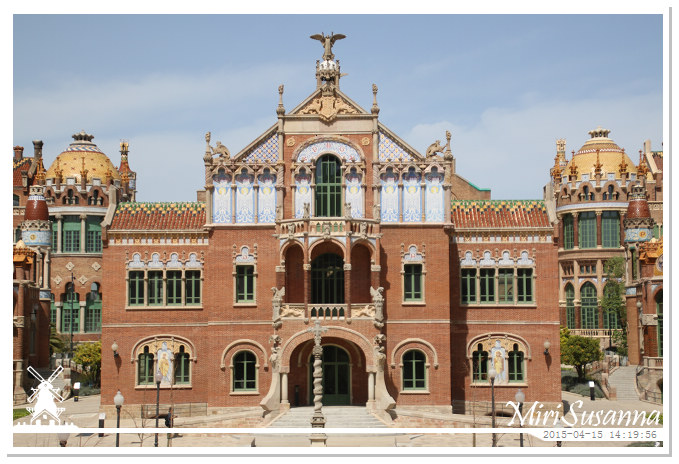
手術室大樓。
Building of operating rooms.

PG代表的是Pau Gil,其他名字都是對這家醫院有傑出貢獻的醫生。
PG means Pau Gil and the other names are the doctors who had great contributions to this hospital.




回到樓梯間。


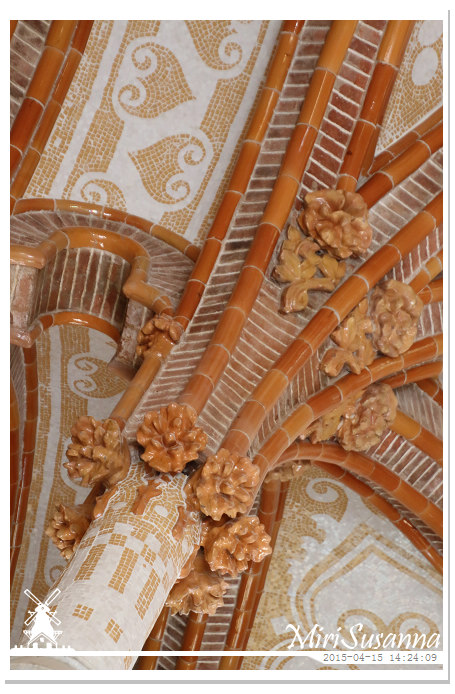






導覽結束,我們可以自由在院區內拍照走走。
After guided tour, we could take a walk in the hospital area ourselves.




Pau Gil.



手術大樓。
Building of operating rooms.




醫院的庭院中有很多果樹和藥材。
There are a lot of fruit trees and plants for medical use in garden.
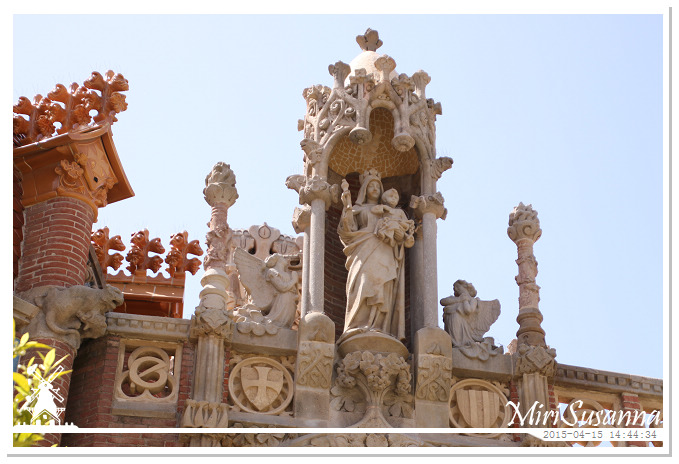











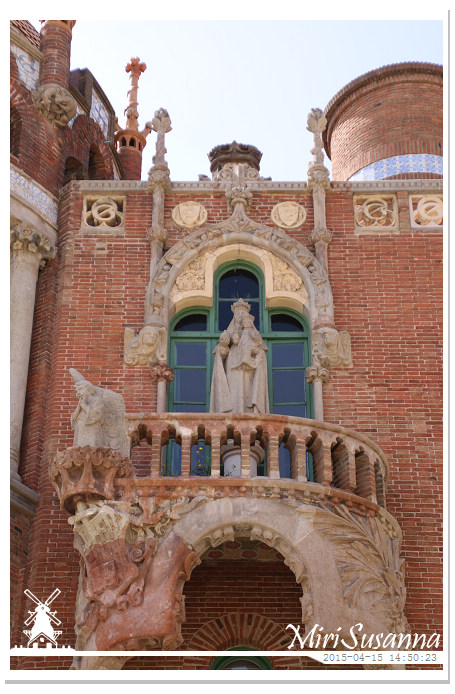

後期蓋的建築,風格就截然不同了。

手術大樓的後方。
Back side of the building for operating rooms.




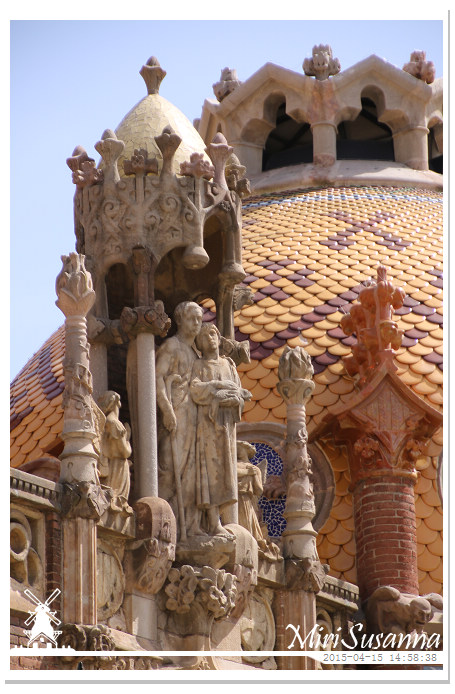

來看看這些建築的通風系統,使用的是熱空氣上升的原理。熱空氣從屋頂的囪口排出,就會把冷空氣從地下層和照片上的圓孔引出,讓室內下降,空氣流通。


屋頂的囪口。








一系列溫馨的母子圖。


彩色的瓦片屋頂和通風的囪口。

主建築後方。
Back side of the main building.







